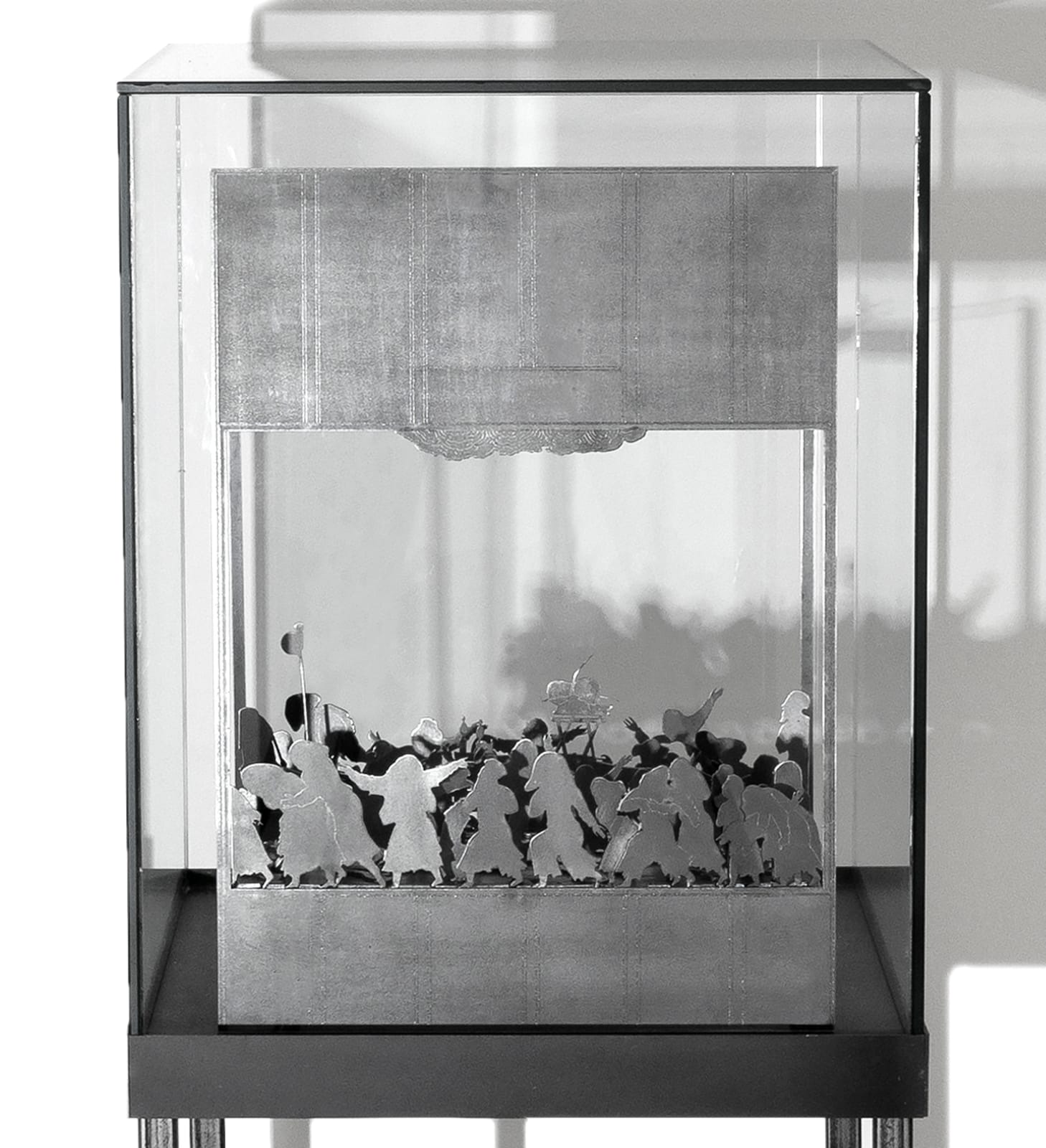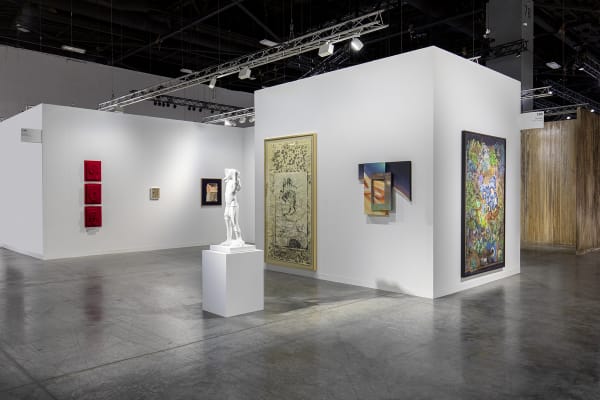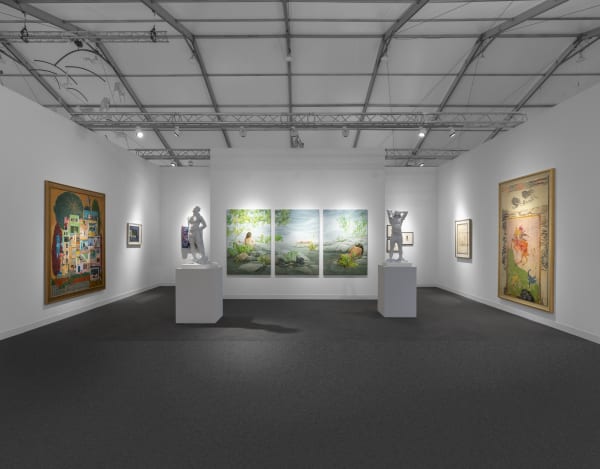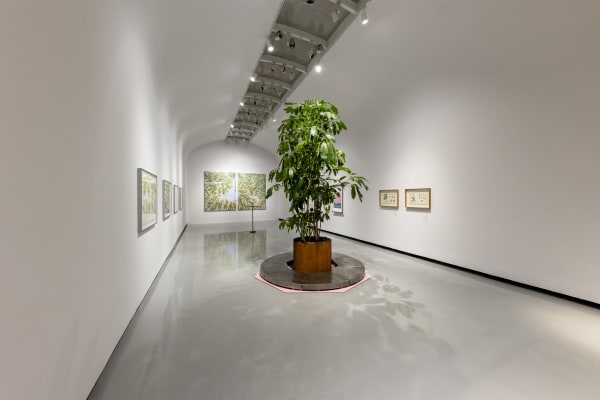Shahryar Hatami Iranian, b. 1983
Overview
Shahryar Hatami (b. 1980, Tehran) is a multidisciplinary artist whose practice is grounded in deep historical research and a persistent inquiry into ways of seeing. His work spans painting, sculpture, and technical installations, and is defined by a commitment to uncovering the visual logic and hidden geometries embedded in Persian miniature painting.
Hatami’s pieces are often based on long-term research into manuscript traditions, mathematical systems, and spatial storytelling, translating these findings into contemporary visual languages. His work is not only technically rigorous but conceptually layered, making it distinctly museum-quality in execution.
Hatami’s pieces are often based on long-term research into manuscript traditions, mathematical systems, and spatial storytelling, translating these findings into contemporary visual languages. His work is not only technically rigorous but conceptually layered, making it distinctly museum-quality in execution.
In 2021, Hatami presented Concealed Over the Revealed at the Tehran Museum of Contemporary Art, a major research-curatorial project that examined the mathematical and metaphysical structures underlying Persian miniatures. Prior to that, in 2016, he was invited to exhibit Three Dimensional Rendering of Cure of Folly, a monumental sculpture made of glass, iron, and brass, in Bosch in Bruges, a citywide festival commemorating the 500th anniversary of Hieronymus Bosch’s death. In 2014, he was listed in 100 Painters of Tomorrow (Thames & Hudson), a global survey of emerging artists redefining the future of painting.
Dastan's representation of Hatami focuses on advancing the institutional reach of his research-based practice. Concealed over the Revealed was conceived with the ambition of traveling internationally.
Dastan's representation of Hatami focuses on advancing the institutional reach of his research-based practice. Concealed over the Revealed was conceived with the ambition of traveling internationally.
This major curatorial and research initiative, first presented at the Tehran Museum of Contemporary Art, was developed with the specific intent of being shown in dialogue with institutional collections that house works central to the project's research, such as those of the Metropolitan Museum of Art, the Chester Beatty Library, the Ashmolean Museum, the Topkapi Palace Museum, the State Hermitage Museum, the Museum of Islamic Art in Cairo, and the Freer Gallery of Art.
Works
Exhibitions
-

Group Presentation | Art Basel Miami Beach 2025
Art Basel Miami Beach 2025 5 - 7 Dec 2025 Art FairsA group presentation of works by Ali Akbar Sadeghi (b. 1937), Farah Ossouli (b. 1953), Reza Aramesh (b. 1970), Bahar Behbahani (b. 1973), Andisheh Avini (b. 1974), Iman Raad (b....Read more -

Group Presentation
Frieze London 2025 15 - 19 Oct 2025 Art FairsAt Booth A5 in Frieze London 2025 , Dastan presents works by Farah Ossouli (b. 1953, Zanjan, Iran), Soheila Sokhanvari (b. 1964, Shiraz, Iran), Reza Aramesh (b. 1970, Ahvaz, Iran),...Read more -

Group Presentation | "Golden Sphere"
+2 [Deh-Vanak] 9 May - 6 Jun 2025 +2A group presentation of works by Negar Farajiani, Shahrouz Hakimi, Nargess Hashemi, Shahryar Hatami, Mona Hosseinzadeh, Tahmineh Mahdian, Shahrzad Monem, Morteza Pourhosseini, Elaheh Ramezani, Salé Sharifi at +2 [Deh-Vanak], Curated...Read more -

Group Presentation
Frieze London 2024 9 - 13 Oct 2024 Art FairsDastan is pleased to announce its participation in Frieze London 2024. Marking Dastan’s third participation at the fair the booth features works by Reza Aramesh (b. 1970), Andishe Avini (b....Read more -

Shahryar Hatami | "Nazireh-Koshi"
Parallel Circuit 3 Nov - 1 Dec 2023 Parallel CircuitA Solo Exhibition of Works by Shahryar Hatami at Parallel Circuit.Read more
News



















